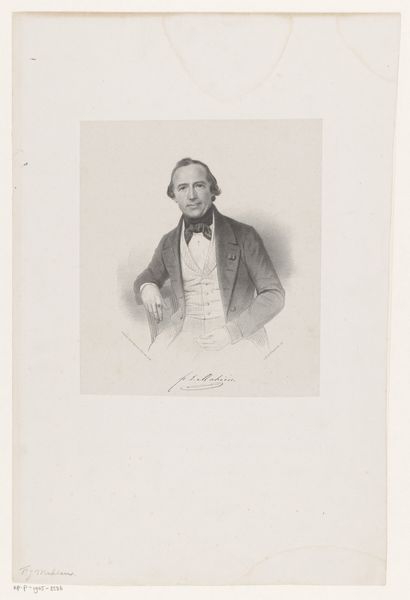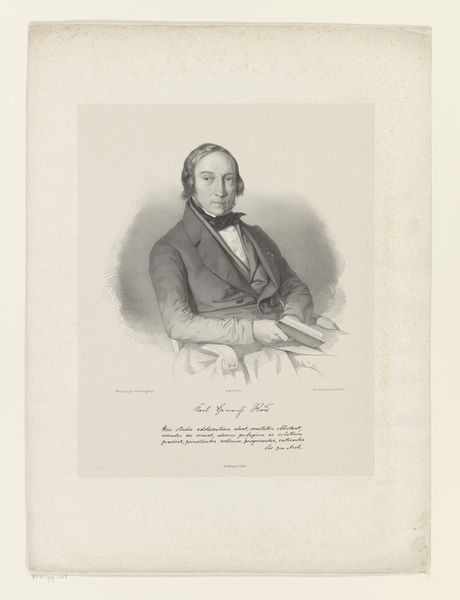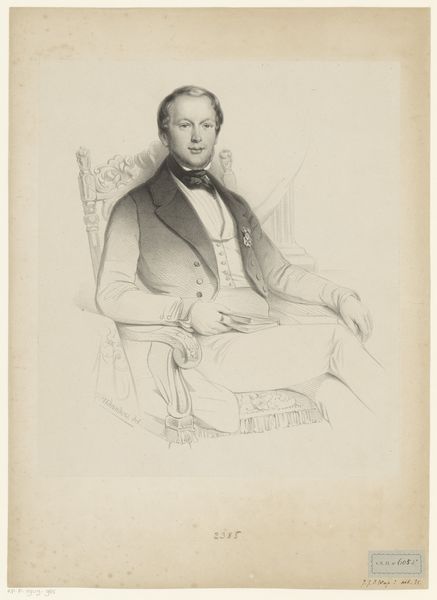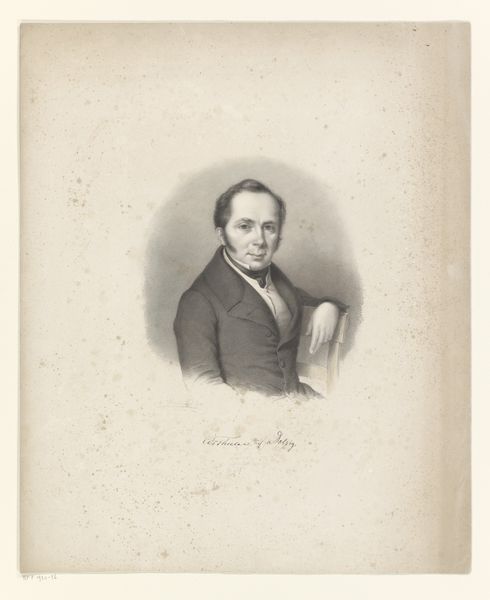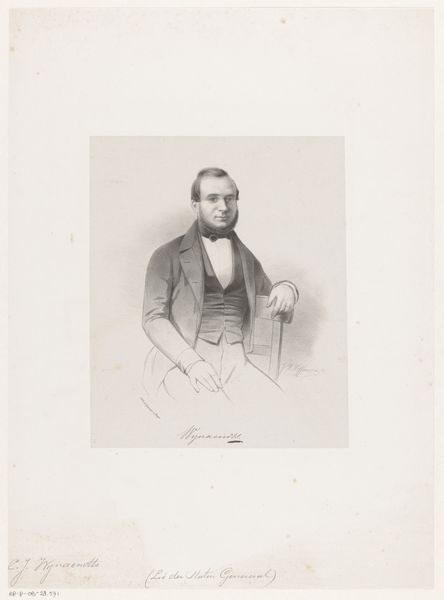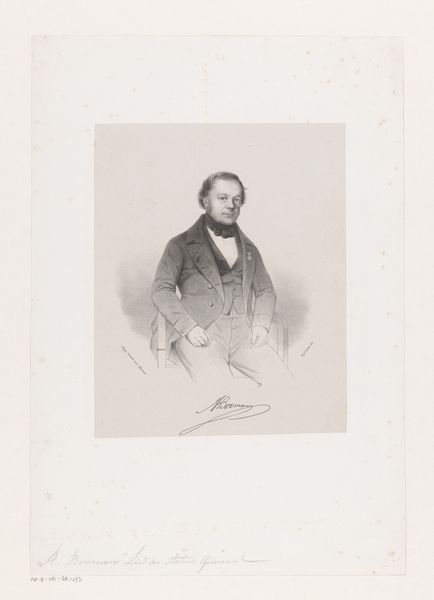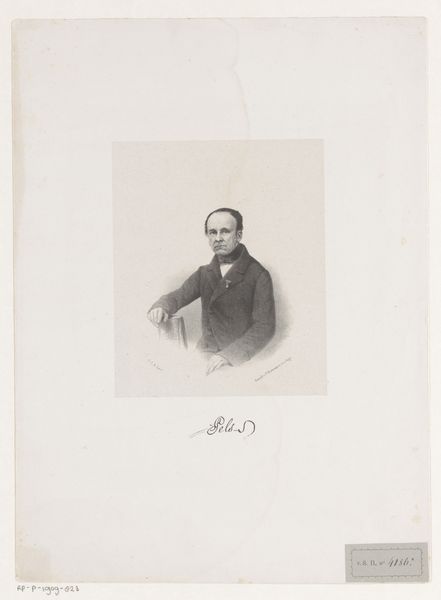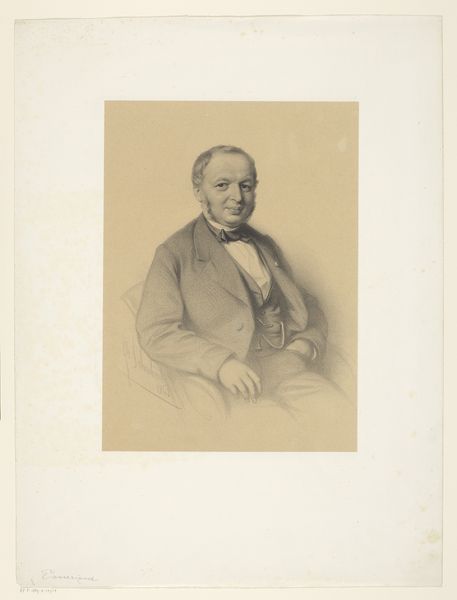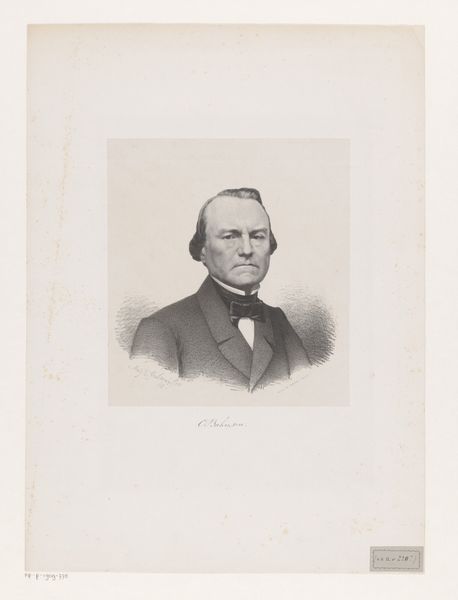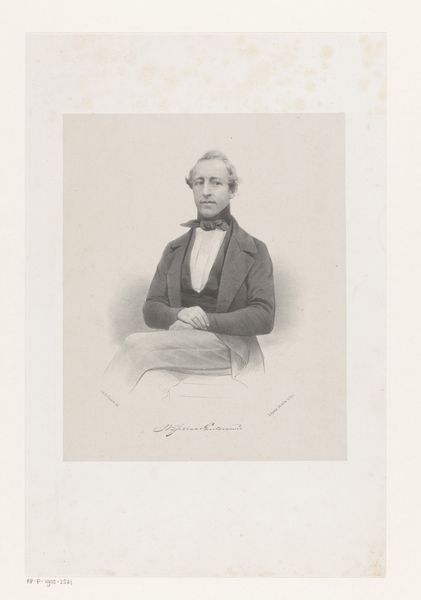
lithograph, print
#
portrait
#
16_19th-century
#
lithograph
# print
#
pencil drawing
#
realism
Dimensions: 346 mm (height) x 253 mm (width) (bladmaal)
Edvard Westerberg made this print of E. A. T. Hyphoff using lithography, a method where an image is drawn on stone or metal and then printed. The unique character of lithography lies in its dependence on the chemical repulsion of oil and water. This technique allows for the creation of very fine lines, seen here in the details of Hyphoff’s face and clothing. Lithography emerged in the 19th century as an affordable method of producing images, playing a crucial role in the expansion of visual culture. It offered a means of mass production, making images accessible to a wider audience. Looking at this portrait, we can appreciate the amount of labor involved in the original drawing and printing, and how it reflects the burgeoning print industry of the time. By understanding the processes behind it, we gain a deeper appreciation for its historical and social context, breaking down traditional barriers between fine art and the everyday world.
Comments
No comments
Be the first to comment and join the conversation on the ultimate creative platform.
